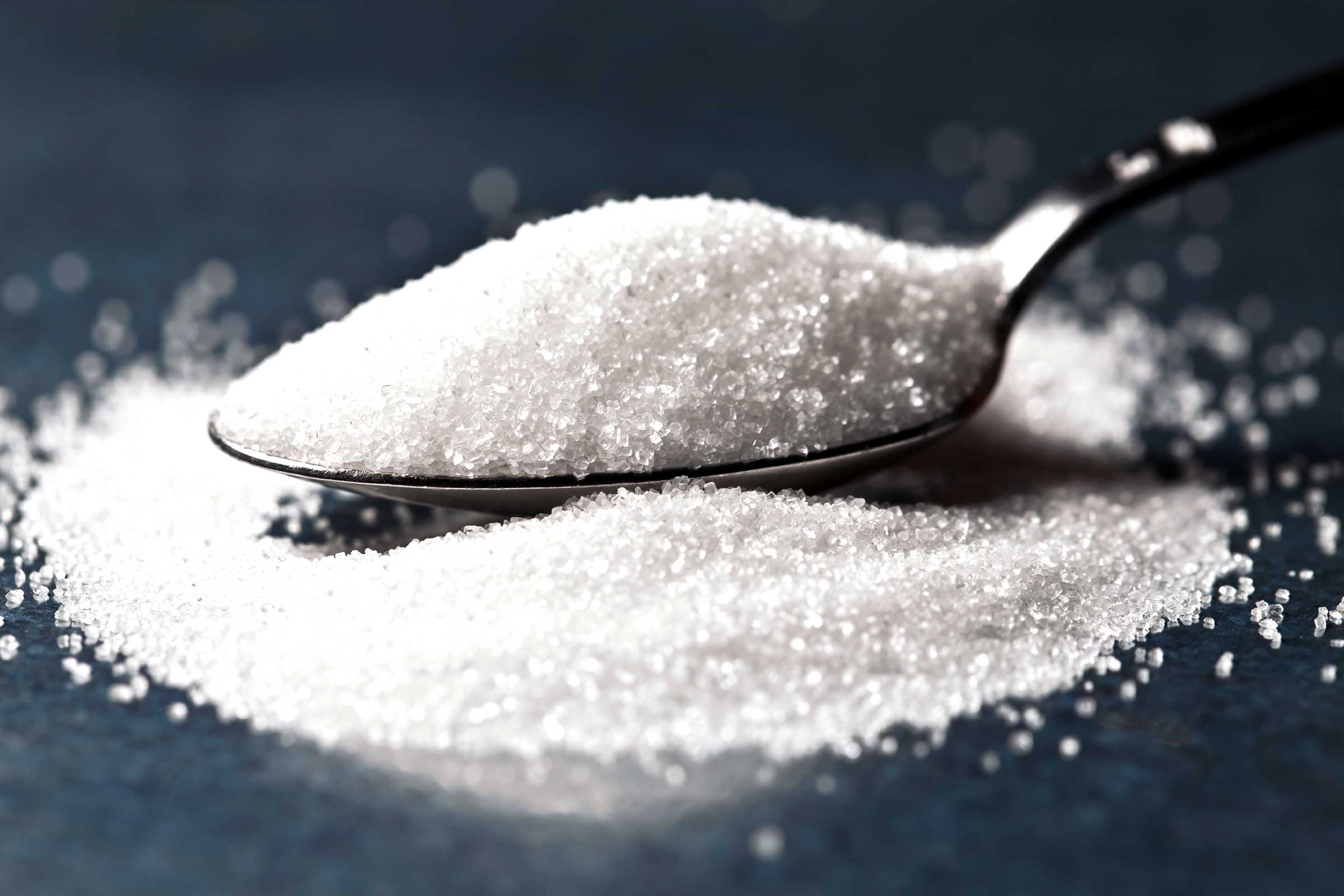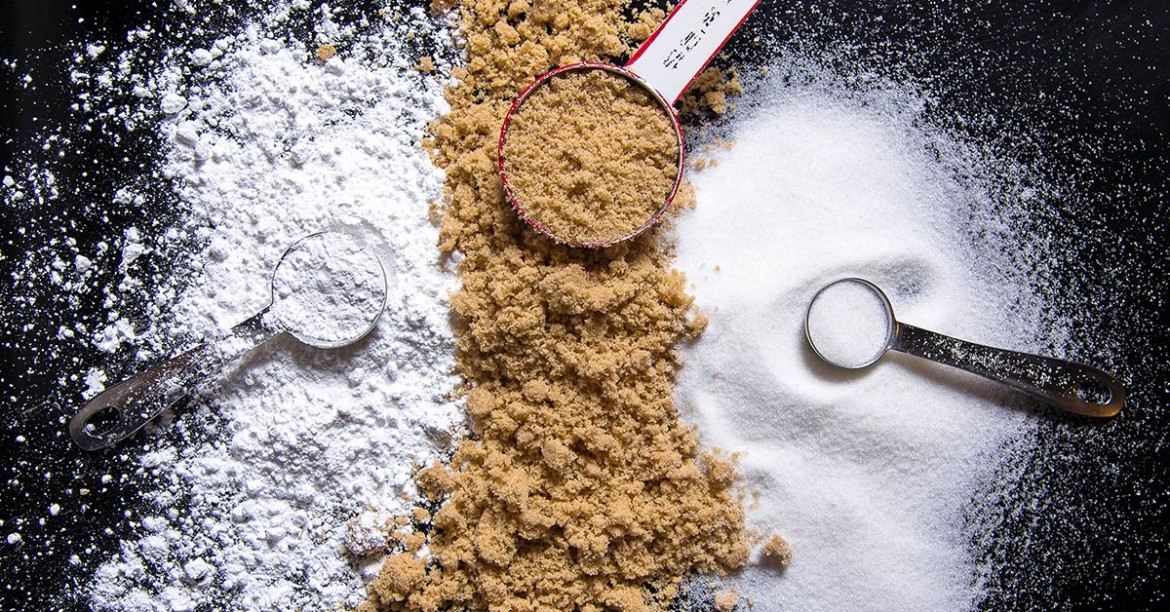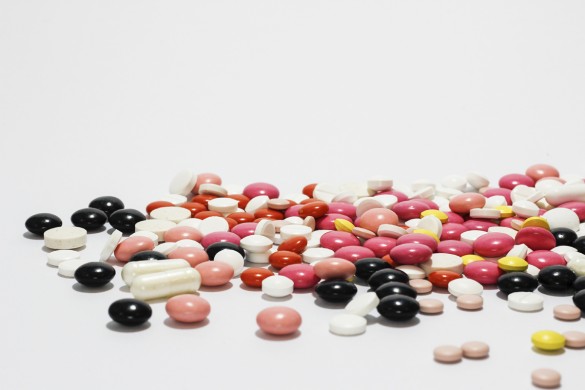By Dr Senani Wijesena 19/10/2016
Excessive sugar consumption is a habit of modern society and westernization of diet occurring in increasing amounts in the last 200 years. With the lowering of the price of sugar, introduction of new sugars such as high fructose corn syrup/sugar beet, mass scale and processed/packaged food production in the 20th century, the consumption of sugar has significantly further increased in the last few decades. With it, has risen the prevalence of chronic diseases such as cardiovascular disease, Type 2 diabetes mellitus, Cancer, Obesity, Alzheimer’s disease and other degenerative and inflammatory conditions.
What is sugar, glycemic index and glycemic load?
Sugar is the generalized term used to describe a range of sweet, soluble, short chain carbohydrates and include sugars naturally contained in food such as fruit and milk and added sugars. Added sugars are sugars that are removed from their natural source and concentrated and can be added to foods or beverages when they are processed or prepared. These sugars include cane sugar and sugar beet (table sugar), honey, molasses, maple syrup, agave, coconut sugar, rice bran malt syrup and high fructose corn syrup (HFCS), amongst others. For a complete list of added sugars, click here.
These different forms of added sugar contain the simple sugars glucose and fructose in varying amounts and this differentially affects their blood sugar elevating effect (glycemic index- G.I.) and their glycemic load (amount of carbohydrate, GL) and kilojoule content as well as the effect they have on fat metabolism/synthesis in the body. Added sugars containing more fructose than glucose as well as other complex carbohydrates and water e.g. honey, have a lower G.I. (varies between 35-58) than sugars that contain more glucose by weight and are processed e.g. table sugar (G.I. 65). High fructose corn syrup, which is a highly processed sweetener made from corn starch and is used to sweeten beverages such as soft drinks and some processed foods has a high G.I. varying between 68-87. This is due to the highly processed nature of the sugar, which breaks down very quickly in the digestive tract and is rapidly absorbed by the body unregulated by insulin.
Several studies have shown that diets with a high GI or GL independently increase the risk of type 2 diabetes, heart disease, gallbladder disease, cancer including breast and colorectal cancer, and all diseases combined and following a low GI/GL diet is associated with a reduced risk of all of these conditions.
The G.I. of a particular food/beverage is calculated between a range of 0-100 with levels > 70 considered to be high, 56-69 is moderate and <55 is low. Pure glucose has a glycemic index (G.I.-blood glucose elevating effect) of 100, pure fructose has a G.I. of 25 and sucrose (cane sugar which is made up of equal amounts of glucose and fructose) has a G.I. of 65. The glycemic index of some common sugars, are displayed below.

Type of Sugar Glycemic Index
Artificial Sweeteners n/a
Stevia 0
Xylitol 7
Agave Nectar 15-30
Fructose 25
Brown Rice Syrup 25
Raw Honey 30
Organic Sugar 47
Turbinado 65
Raw Sugar 65
Cola 70
Corn Syrup 75
Table Sugar 80
High Fructose Corn Syrup 87 (varies depending on type)
Glucose/Dextrose 100
Maltodextrin 150
The glycemic load (G.L.- amount of carbohydrate by weight) of a food/beverage is now considered to be just as important as the G.I. in relation to the blood glucose elevating effect of the food and is influenced by other factors such as the content of fiber and water which lower it. The fiber content of fruits and vegetables, for example leads to a slowing of the release of the fructose from the food in the gastrointestinal tract, which decreases the G.I. as does the variable water content in addition to fiber, which lowers the GL. A food’s glycemic load is determined by multiplying its glycemic index by the amount of carbohydrate the food contains in each serve and dividing by 100. For one serving of a food, a GL greater than 20 is considered high, a GL of 11–19 is considered medium, and a GL of 10 or less is considered low. Foods that have a low GL in a typical serving size almost always have a low GI. Foods with an intermediate or high GL in a typical serving size range from a very low to very high GI. Fruits for example have a low to high GI varying between 22 (cherries) to 72 (watermelon) and a low to medium GL varying between 1 (strawberries) to 11 (bananas and grapes). When fruits are concentrated to produce fruit juice and dried fruit, their G.I. and G.L. increase considerably. Milk contains the natural sugar lactose, which breaks down into glucose and galactose and starches and grains such as wheat and rice contain long chains of glucose and fiber in varying amounts (no fructose). Fiber and water in these natural food sources slows down the sugar breakdown/release and blood glucose elevating effect as well. The glycemic load effect of a food can be reduced by eating a smaller serve/quantity of that food/beverage, hence lowering the blood glucose elevation.
Other added sugars that have previously been considered better types of sweeteners as an alternative to table sugar such as agave, maple syrup and coconut nectar are still sugars, although with slightly higher nutritional value and fiber in some cases and lower GI, but carry a high glycemic load and detrimental effect on the body/metabolism if consumed in moderate to high amounts on a regular basis. Certain natural plant based sweeteners, however, such as stevia, xylitol and erythritol are low carbohydrate/low kj alternatives which are preferred as substitutes in small quantities in the diet. These alternative sweeteners will be discussed further in detail in a future article.
Although fructose by itself has a lower GI than pure glucose, high fructose containing sugars by weight such as all added sugars (including table sugar, HFCS, honey, concentrated fruit juice etc) have other detrimental effects on the body due to the way it is metabolized in the body. Fructose does not stimulate the release of the appetite-suppressing hormone leptin, hence over consumption may occur when individuals consume high fructose containing sugars leading to increased fat synthesis and weight gain. This and other effects of fructose will be explained in detail later in the article.
Added sugar- How much do we consume?
The main sugar cane and sugar beet producers around the world are Brazil, India, China, Mexico, Australia, Thailand, Pakistan and the United States. These crops, which are mostly genetically modified, produce what is commonly known as table sugar and is chemically comprised of glucose and fructose (sucrose). Sucrose (from sugar cane/sugar beet) and high fructose corn syrup (HFCS) are used to sweeten drinks and food produce (e.g. cereals, packaged foods, sweets). Sugar-sweetened beverages –soda, fruit punches, sports drinks, energy drinks, sweetened tea, and other carbonated or non-carbonated drinks that are sweetened with sugar–are the largest source of added sugar in the US/western diet today.
Added sugars, like all carbohydrates contain an energy value equal to protein and half that of fat of 16.7kj/gram and are consumed in high quantities in the diet of people in westernized countries and increasingly in developing countries in those adopting a western diet. The average person in Australia consumes about 22 kilograms of sugar each year. According to the Australian health survey of 2011/2012 Australians consumed an average of 60 grams of free sugars per day (equivalent to 14 teaspoons of white sugar) = 1002kj/day. Sugar accounts for approximately on average 8% of total daily KJ intake and has been shown to range from 5-20%Energy in the adult diet. The majority of free sugar intake is from added sugars with an average 52 grams (or 12 teaspoons) mostly coming from sweetened beverages and “extra foods” (muffins, cakes, chocolate bars, confectionary etc.) while 7 grams of free sugars are from honey and fruit juice. Sugar intake according to the 2011/12 survey, was found to be highest among teenage males, who consumed an average of 92g or 18 teaspoons per day. This is concerning considering the rising incidence of early onset Type 2 Diabetes Mellitus and abnormal lipid levels/fatty streaks in children and the setting up of long term eating habits.
Sugar and Metabolic syndrome
Is Fructose the culprit and how does it affect our health?
Consumption of added sugar is associated with the development and prevalence of metabolic syndrome, which is characterized by fatty liver, dyslipidemia (elevated total cholesterol, bad small dense LDL cholesterol and triglycerides, low good HDL cholesterol), insulin resistance, high uric acid levels (gout), cardiovascular disease (CVD), hypertension, and Type 2 diabetes mellitus (T2DM). This is often independent of body weight gain or total energy intake and is via fructose related metabolic changes. The epidemiological data suggest that these direct effects of fructose are pertinent to the consumption of the fructose-containing sugars, sucrose and high fructose corn syrup (HFCS), which are the predominant added sugars. Studies have shown that subjects consuming glucose only-sweetened beverages did not exhibit these changes, despite comparable body weight gain and equal KJ intake to those consuming fructose-sweetened beverages. Consumption of excess sugar may also promote the development of CVD and T2DM indirectly by causing increased body weight and fat gain i.e. (positive energy balance), which also affects lipid and carbohydrate metabolism. Studies suggest that those who consume one sugar sweetened drink or more per day for example double their risk of diabetes and raise their risk of coronary heart disease by 23% and CVD mortality by 18% compared to those who consume one sugar sweetened drink or less per month. High-fructose corn syrup, the most common sugar used in sodas in the USA, may have particularly deleterious effects on the liver, resulting in insulin resistance in the liver/body and the metabolic syndrome. In Australia and most other countries, soft drinks are sweetened with sugar rather than high fructose corn syrup, which is although better than the latter, still has detrimental effects on fat/carbohydrate metabolism.
Despite fructose as a sugar having a lower glycemic index than glucose (which is found in starches/grains), why is it that this simple sugar has a more deleterious effect on the development of cardiovascular disease/fat synthesis and other metabolic changes associated with metabolic syndrome? Fructose is predominantly metabolized in the liver, but unlike glucose it does not require insulin to be used by the body and is not regulated. Fructose, hence, is taken up by the liver in unlimited quantities whereas glucose from starch (breads etc.) bypasses the liver due to different mechanisms of handling by the body and control by insulin. The fructose overload in the liver results in providing excess substrate for fatty acid synthesis by the liver as it is a source of the fat precursor acetyl- CoA. Increased level of liver lipid content then promotes the production and secretion by the liver of a type of fat called triglycerides after a meal as well as altered lipid levels in the circulation (increased cholesterol, triglycerides, small dense LDL) which have been linked with insulin resistance, CVD and type 2 DM.
Increased levels of liver fats may also promote liver insulin resistance and impaired insulin action due to alteration in the biochemical properties of the insulin receptor on liver cells from increased levels of a particular fat called DAG (diacyl glycerol), which damage the receptor. Increased liver and total body insulin resistance that occurs as a result leads to even stronger activation of lipid synthesis and a viscous cycle of increasing insulin resistance, blood sugar elevating effects, dyslipidemia and so forth.
Insulin is a hormone that is produced in the pancreas that is released when blood sugar levels rise (due to carbohydrate intake) and it stimulates the uptake of glucose by the cell. When insulin resistance (decreased insulin sensitivity) occurs, due to increased fatty acid synthesis/damage to the insulin receptor, glucose uptake is impaired and hyperglycemia results. Raised blood glucose levels lead to further increases of fatty acid synthesis as excess substrates from glucose are diverted down that pathway.
There are three published studies which suggest that consumption of added sugar at 20% Energy or less can increase risk factors for metabolic disease with an increased risk associated with higher increments of intake. Currently the recommended dietary intake (RDI) of all sugar in Australia and recommended by the American health association is 5% of total KJ. Australians and those consuming western diets have an intake of 8% on average and up to 20% according to recent surveys. 25%Energy is the current upper level recommended in the 2010 report of the dietary guideline advisory committee. Based on the most recent 2011-2012 Australian Health Survey of more than 8000 participants, it found 55 per cent of participants consumed more added sugars than recommended.
Sugar and appetite regulation/addiction

Apart from the specific effects on fat and carbohydrate metabolism detailed above, high sugar diets promote more weight gain than consumption of a low sugar diet that is otherwise the same in KJ content due to the effects on an appetite regulating hormone called leptin. Fructose does not stimulate insulin secretion by the pancreas or leptin production leading to lower levels of both in the circulation. Leptin acts along with insulin, in an area of the brain called the hypothalamus to regulate food intake and energy metabolism. Leptin deficient patients exhibit increased hunger and impaired satiety (reduced appetite satisfaction). Leptin release also promotes energy expenditure and fat oxidation. Thus leptin is a key regulator of energy homeostasis. Therefore, compared to a high starch or glucose diet of equal calorie content, a high fructose diet reduces leptin production and circulating leptin concentrations, leading to increased appetite and calorie intake, decreased energy expenditure and increased body weight gain.
It has also been shown that a high sucrose beverage causes release of dopamine from the nucleus accumbens in the brain, which is a neurotransmitter that is also released when substances of abuse such as cocaine are consumed. The down-regulation of the dopamine receptors with repetitive sucrose ingestion leads to neural activation patterns associated with addictive like eating behavior similar to those associated with substance dependence. Other neuro-biochemical changes associated with sugar ingestion include inhibited responses to stress, with lowered cortisol levels (less stress hormones) compared to individuals consuming alternative sweeteners. Sugar, hence has a perceived stress reaction lowering effect and may be an additional factor encouraging intake in the individual.
Another interesting finding is that compared to solid food forms, sweetened beverages (e.g. soft drinks/fruit juice) hold weak appetite satisfying properties that lead to failure to adjust intake at subsequent eating occasions for energy supplied by the beverages. Hence liquid sugar may promote greater energy intake and weight gain than consuming sugar in solid food. Because sugar in liquid is digested, absorbed and delivered to the liver more quickly than sugar in solid food it may promote a greater substrate overload (more substrate in a shorter time frame) in the liver. This could lead to greater increases in fatty acid synthesis, liver lipid accumulation and post-meal triglycerides in participants consuming sugar-sweetened beverages compared to those consuming sugar in solid food.
Sugar and cancer – the link between blood glucose elevation and tumor development
Cancer is a disease of modern civilization and is reported rarely in hunter-gatherer communities that exist around the world. The switch from the “caveman’s diet” consisting of fat, meat and occasionally roots, berries and other sources of carbohydrate (CHO) to a nutrition dominated by easily digestible CHOs derived mainly from grains as staple food occurred too recently in human history to induce major adoptions in our genes encoding the metabolic pathways. Hence due to inability to adapt genetically to new dietary foods such as grains, dairy and sugars (agriculturisation) and more recently refined carbohydrate products and processed food with high glycemic index/glycemic load, trans fats, high omega 6, low omega 3 and low dietary fiber, diseases of westernization/modernization such as Diabetes, Cancer, CVD and chronic degenerative diseases have arisen.
Cordain and colleagues estimated that modern hunter-gatherers derived about 22-40 Energy % from CHOs and 19-30 E% from protein, which is lower and higher, respectively, than recommended by Western food agencies. High CHO intake, in particular in the form of sugar and other high GI foods, has been linked to modern diseases like metabolic syndrome, Alzheimer’s disease, cataract and macular degeneration and gout. The connection between cancer and carbohydrates has been known since early studies in the 1920’s. It is well known that cancer cells use glucose as an energy fuel (glycolysis) for replication and growth and have a higher demand for glucose compared to non-cancerous cells in the same tissue. In addition, many cancer cells express insulin receptors (IR) and show hyper-activation of the insulin like growth factor 1(IGF-1) receptor-IR pathway suggesting interaction between cancer cells, insulin and glucose. Evidence exists that chronically elevated blood glucose, insulin and IGF1 levels facilitate tumorigenesis (formation of tumors) and worsen the outcome in cancer patients. Epidemiological evidence is accumulating and suggests that the risk of cancers of the colon, pancreas, endometrium (uterine lining), breast and prostate are related to circulating levels of insulin, IGF-1, or both. Consumption of > 2 sugar sweetened beverages per day has been shown in studies for example to be associated with an increased risk of developing various cancers, including pancreatic cancer compared to individuals who only drink 1 SSB per month. It has also been noted that there is a positive correlation and link between increased incidence of metabolic syndrome (CVD, Type 2 DM) in western countries/ western diets and cancer.
Epidemiological and anthropological studies indicate that restricting dietary CHOs could be beneficial in decreasing cancer risk. Restriction of dietary CHOs would counteract this signaling cascade by normalizing glucose and insulin levels in subjects with metabolic syndrome, in this way acting similar to calorie restriction/fasting, which is also known to be protective against the development and progression of cancer. Indeed, several experimental studies have shown that malignant cells in vitro quickly lose ATP (their energy source) and commit apoptosis (cell death) and shrink when starved of glucose.
Studies have also shown that diabetogenic glucose concentrations (11 mmol/L) compared to normal physiological ones (5.5 mmol/L) lead to altered expression of genes that promote cell proliferation (growth), migration and adhesion in tumor cell lines from several organs including breast, colon, prostate and bladder. Hyperglycemia is a predictor of poor survival in patients with various cancers and has been positively correlated to an increased risk for developing cancer at several sites including the pancreas, esophagus, liver, colon, rectum, stomach and prostate in large cohort studies.
Besides delivering more glucose/energy to the tumor tissue and stimulating insulin release and activation of tumor forming IGF1, hyperglycemia has two other important negative effects for the host: First, modest blood glucose elevations as they typically occur after a Western diet meal competitively impair the transport of ascorbic acid (vitamin C) into immune cells. Ascorbic acid is needed for effective functioning of the immune system; the immune response to malignant cells is diminished when levels of vitamin C are low. Second, it has been shown that hyperglycemia activates certain types of blood cells called monocytes and macrophages to produce inflammatory cytokines/chemicals such as IL-6 that play an important role in the progression of cancer. Thus, a diet, which repeatedly elevates blood glucose levels, due to a high glycemic load, provides additional growth stimuli for neoplastic cells.
Evidence also shows that modest CHO restriction can prevent cancer from developing due to the various pathways previously outlined. Studies have also shown that an increase in sucrose intake (table sugar and HFCS) is associated with metastasis (spreading of cancer) with Cohen showing specific effects on lung metastasis due to the synthesis of immune cell chemical 12-LOX and a fatty acid known as 12-HETE.
Usually, CHO restriction and low carbohydrate diets are not only limited to avoiding sugar but also to a reduced intake of grains. Grains (such as wheat, rye, oats, rice) also cause hyperglycemia and raise insulin levels as does starchy vegetables such as potato. Grains can also induce inflammation in susceptible individuals due to their content of omega-6 fatty acids, lectins and gluten. In particular gluten might play a key role in the pathogenesis of auto-immune and inflammatory disorders and some malignant diseases. In the small intestine, gluten triggers the release of zonulin, a protein that regulates the tight junctions (connections) between epithelial cells and therefore intestinal, but also blood-brain barrier function. Recent evidence suggests that overstimulation of zonulin in susceptible individuals could deregulate intercellular communication promoting tumorigenesis (tumor formation) at specific organ sites.
Paleolithic-type diets, that by definition exclude grain products and sugars, have been shown to improve glycemic control and cardiovascular risk factors more effectively than typically recommended low-fat diets rich in whole grains. These diets are not necessarily very low CHO diets, but focus on replacing high-GI modern foods with fruits and vegetables, in this way reducing the total GI and GL.
Sugar and Alzheimer’s disease and Cognition

High-sugar diets as previously noted are thought to promote weight gain and insulin resistance predisposing to type 2 Diabetes Mellitus. To aggravate this scenario, it has been consistently shown that type 2 DM is a risk factor (double the risk) for Alzheimer’s disease and both disorders share similar demographic profiles, risk factors, and clinical and biochemical features (e.g. insulin resistance). Therefore, dietary changes can significantly reduce the risk of T2D and Alzheimer’s disease and thereby increase the quality of life and improve longevity.
Alzheimer’s disease (AD) is a common, progressive, neurodegenerative disease that primarily afflicts the elderly and symptoms include short term memory loss, disorientation, behavioural and language problems, altered mood and poor self care. A well-defined risk factor for late onset AD is possession of one or more alleles of the epsilon-4 variant (E4) of the apolipoprotein E gene. The apoE4 protein alters lipid metabolism in a manner similar to a high carbohydrate diet, suggesting a common mechanism for the etiology of AD. Evolutionarily discordant high carbohydrate diets are proposed to be the primary cause of AD by two general mechanisms. (1) Disturbances in lipid metabolism within the central nervous system inhibits the function of membrane proteins such as glucose transporters and the amyloid precursor protein. (2) Prolonged excessive insulin/IGF signaling accelerates cellular damage in cerebral neurons (a part of the brain). These two factors ultimately lead to the clinical and pathological course of AD. This hypothesis also suggests several preventative and treatment strategies. A change in diet emphasizing decreasing dietary carbohydrates and increasing essential fatty acids may effectively prevent AD.
Higher intakes of carbohydrates, particularly simple sugars, have been associated with lower cognitive function (mental processing) in general. In a population-based prospective cohort study of elderly people, the risk of mild cognitive impairment or dementia was increased in subjects who derived a high percentage of their energy from carbohydrates but was reduced in those who derived a high percentage of energy from fat and protein. Similarly, a cross-sectional study on school children (aged 6–7 years) reported an inverse relationship between the consumption of refined carbohydrates and non-verbal intelligence after adjustment for factors such as BMI. These tests measured skills such as the children’s ability to organise spatial perceptions and how they stored and reproduced information.
Inflammation is another mechanism behind the link between sucrose and Alzheimer’s disease. Studies show that sucrose fed rats had elevated inflammation in a part of the brain that controls memory (hippocampus) marked by the presence of tumor necrosis factor alpha (TNF-α) and interleukin-1 beta (IL-1β) mRNA compared to control rats. These inflammatory changes were strongly correlated with place recognition deficits. Importantly, the memory deficits and inflammation were only evident in adolescent, not adult rats, indicating that this period of development may represent a sensitive window. Interestingly, in human studies, individuals with metabolic syndrome that show increased inflammation have more pronounced cognitive deficits than those with low levels of inflammation. Diets high in fat and sugar have also been shown to reduce brain-derived neurotrophic factor (nerve growth factor) expression and this has been correlated with memory deficits. High sugar diets also leads to higher levels of amyloid accumulating in the brain. A toxic amyloid protein called ADDL removes insulin receptors from nerve cells, thereby rendering those neurons insulin resistant, and as ADDLs accumulate, memory begins to deteriorate.
Conclusion
Hence, it can be seen that high sugar diets are associated with the development of many chronic diseases of westernization including cardiovascular disease, fatty liver, type 2 diabetes, dementia, Alzheimer’s disease and cancer with the same underlying mechanisms (elevated glucose, insulin, insulin resistance, inflammation) which can be controlled by dietary changes. Following a lower sugar diet, which is low in GL and GI overall is recommended to not only prevent these conditions but also in the treatment and reversal of pathophysiological changes which will contribute to a reduced incidence and prevalence of disease in the community.
References
- A. Sanchez. Role of sugars in human neutrophilic phagocytosis. Am J Clin Nutr November 1973 vol. 26 no. 11 1180-1184
- R. Kaaks. Nutrition, insulin, IGF-1 metabolism and cancer risk: a summary of epidemiological evidence. Curr Opin Clin Nutr Metab Care. 2013 Jul;16(4):440-5.
- PL Moreira. High-sugar diet, type 2 diabetes and Alzheimer’s disease. Med Hypotheses. 2004; 62 (5): 689-700
- ST Henderson. High carbohydrate diets and Alzheimer’s disease. Nutrients. 2015 Aug; 7(8): 6719–6738.
- Jessica Beilharz et al. Diet-induced cognitive deficits: The role of fat and sugar, potential mechanisms and nutritional interventions. J Manipulative Physiol Ther. 1990 Jul-Aug;13(6):322-5.
- Fructose, weight gain, and the insulin resistance syndrome. SS Elliot. Am J Clin Nutr November 2002 vol. 76 no. 5 911-922
- S. Larsson et al. Consumption of sugar and sugar sweetened foods and the risk of pancreatic cancer in a prospective study. Am J Clin Nutrition. 2006 ;84:1171-16
- Tekeshe Mekonnen et al. Health benefits of reducing sugar-sweetened beverage intake in high risk populations of California: Results from the cardiovascular disease policy model. PLoS ONE 8(12) Dec 11 2013
- Klement and Kämmerer. Is there a role for carbohydrate restriction in the treatment and prevention of cancer. Nutrition & Metabolism 2011, 8:75
- Shambaugh P, Worthington V, Herbert JH. Differential effects of honey, sucrose and fructose on blood sugar levels. Int J Food Sci Nutr.2009






